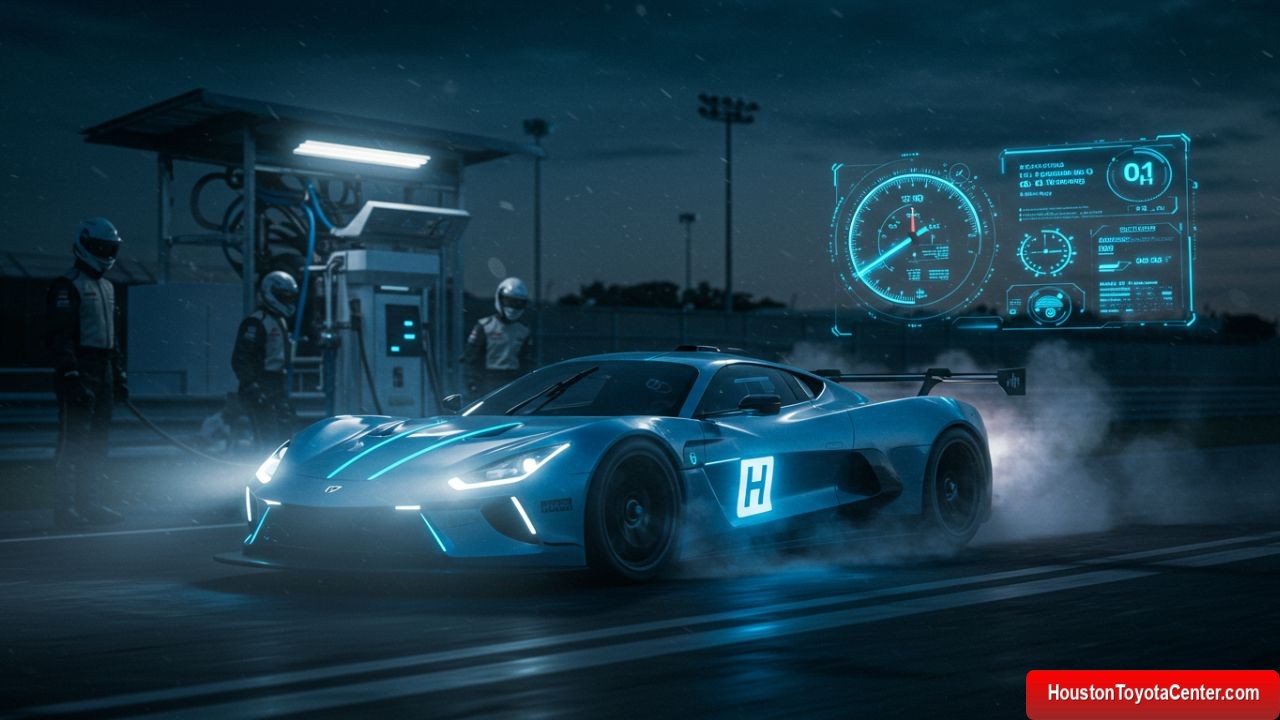In the global quest to reduce carbon emissions and tackle climate change, automakers are exploring bold new frontiers in vehicle propulsion. Electric vehicles (EVs) have taken center stage in the push for greener transportation, but not every manufacturer is betting solely on battery power. One company in particular—Toyota—is leading an alternative path into the future: hydrogen combustion engines.
Unlike hydrogen fuel cell vehicles (FCVs), which generate electricity from hydrogen to power electric motors, hydrogen combustion engines function more like traditional internal combustion engines (ICEs). They burn hydrogen instead of gasoline, offering a familiar driving experience while potentially achieving zero carbon emissions at the tailpipe.
But can this technology truly redefine the automotive industry? Is hydrogen combustion the next frontier—or merely a detour? Let’s dive deep into the engineering, environmental implications, challenges, and future potential of Toyota’s groundbreaking approach.
The Basics: What Is a Hydrogen Combustion Engine?
To understand the significance of Toyota’s hydrogen combustion engine, we first need to distinguish it from hydrogen fuel cells and traditional ICEs.
FREE: Quickly identify and understand problems with your vehicle 🚘
CLICK HERE| Feature | Hydrogen Combustion Engine | Hydrogen Fuel Cell | Traditional ICE |
|---|---|---|---|
| Fuel Source | Compressed hydrogen gas | Compressed hydrogen gas | Gasoline/diesel |
| Emissions | Near-zero CO₂ (may emit some NOₓ) | Zero CO₂, zero NOₓ | High CO₂ and NOₓ |
| Powertrain | Internal combustion | Electric motor | Internal combustion |
| Efficiency | ~25–30% | ~60% | ~20–25% |
| Sound & Vibration | Similar to gas engines | Quiet, like EVs | Loud and mechanical |
The hydrogen combustion engine uses a modified gasoline engine to burn hydrogen gas. The chemical reaction between hydrogen and oxygen results in water vapor, not carbon dioxide, as the primary by-product. However, nitrogen oxides (NOₓ) can still be produced due to the high combustion temperatures in air.
Toyota’s approach is about retaining the visceral and mechanical qualities of a gasoline engine—without the carbon.
Toyota’s Prototype: The Corolla Sport and GR Yaris
In 2021, Toyota unveiled a hydrogen combustion prototype: a modified Corolla Sport equipped with a 1.6L turbocharged three-cylinder engine. It’s the same engine block used in the GR Yaris, but reconfigured to run on compressed hydrogen.
Toyota began testing it in motorsports—including the Super Taikyu Series in Japan—to evaluate its performance under extreme conditions. Drivers and engineers reported:
- Crisp throttle response
- Deep, familiar engine sound
- Comparable power to gasoline variants
- 0 carbon emissions from fuel combustion
The goal was not only technical validation, but also to challenge public perceptions that sustainable cars have to be silent or boring.
Toyota’s president, Akio Toyoda, even raced the hydrogen-powered car himself—underscoring the company’s passion and belief in this technology.
Why Hydrogen Combustion? Toyota’s Philosophy
Toyota’s stance on energy and mobility diversity plays a major role in their pursuit of hydrogen combustion. While most automakers are putting all their chips into BEVs (Battery Electric Vehicles), Toyota emphasizes a multi-pathway approach:
“There is no single solution to decarbonization. Different markets, climates, and use cases require different technologies.”
— Akio Toyoda, Former President of Toyota Motor Corporation
Here’s why hydrogen combustion aligns with this philosophy:
- Use of Existing Infrastructure: ICE manufacturing knowledge and infrastructure can be reused, reducing transition costs.
- Retention of Driving Pleasure: Offers sound, vibration, and driver involvement absent in BEVs.
- Quick Refueling: Hydrogen refueling takes 3–5 minutes, comparable to gasoline.
- Less Rare Material Dependency: Unlike EVs, hydrogen combustion doesn’t require lithium, cobalt, or rare earths.
Challenges and Criticism
Despite its promise, hydrogen combustion technology faces significant headwinds. Here are the most pressing challenges:
1. Hydrogen Availability and Infrastructure
Hydrogen fueling stations are rare and primarily located in Japan, South Korea, and California. Building a nationwide hydrogen network is expensive and slow.
- Cost of building a hydrogen station: ~$2–3 million
- Number of U.S. stations (2025 est.): ~100
- Number of EV charging stations (2025 est.): >150,000
2. NOₓ Emissions
Although hydrogen combustion produces no CO₂, it can still emit nitrogen oxides (NOₓ)—regulated pollutants that contribute to smog. Toyota is working on exhaust treatment systems to mitigate this, but the challenge remains.
3. Energy Efficiency
Compared to EVs, hydrogen combustion is less energy efficient. Consider the “well-to-wheel” efficiency:
| Technology | Energy Efficiency |
|---|---|
| BEV | ~70–80% |
| Hydrogen Fuel Cell | ~60% |
| Hydrogen Combustion | ~30% |
Producing hydrogen, transporting it, and then burning it consumes more energy than directly charging a battery.
4. Public Skepticism
Critics argue that hydrogen combustion is:
- A distraction from electrification
- A niche solution with poor scalability
- A marketing ploy to delay regulatory action
Applications Beyond Passenger Cars
Toyota isn’t stopping at sedans or hatchbacks. The company is exploring hydrogen combustion for:
Commercial Trucks
Hydrogen’s energy density makes it ideal for heavy-duty vehicles that need long range and fast refueling. Toyota has already tested fuel-cell trucks in collaboration with Kenworth. Hydrogen combustion could offer a cheaper, scalable alternative.
Motorsports
Toyota is betting that racing hydrogen-powered vehicles can accelerate development and public interest. Motorsport serves as a high-pressure R&D environment.
Agriculture and Industrial Use
In Japan, Toyota has collaborated with Yanmar and Kawasaki Heavy Industries to explore hydrogen-powered engines in tractors and generators—potentially replacing diesel in off-grid applications.
Hydrogen Combustion vs. Fuel Cell: Which One Wins?
| Category | Hydrogen Combustion | Fuel Cell |
|---|---|---|
| Emissions | Water vapor + NOₓ | Pure water |
| Refueling Time | 3–5 minutes | 3–5 minutes |
| Complexity | Less complex than fuel cells | Requires advanced stack & electronics |
| Maintenance | Familiar to mechanics | Requires specialized service |
| Use Cases | Enthusiast driving, motorsports, trucks | Fleets, taxis, long-haul transport |
| Efficiency | Lower | Higher |
In the long run, fuel cells might win in efficiency and urban applications. But hydrogen combustion could serve enthusiasts, rural drivers, and heavy-duty sectors that value mechanical simplicity and torque.
Where Does Toyota Go From Here?
Toyota has confirmed they are continuing R&D into hydrogen combustion engines. Some potential next steps include:
- Mass production of a hydrogen-powered GR Yaris or Corolla
- Strategic partnerships with hydrogen producers to reduce fuel cost
- Scaling up motorsport development as a showcase and testbed
- Expansion into markets like Australia, the UAE, and Northern Europe, where hydrogen infrastructure is gaining ground
Toyota’s Woven Planet initiative and Hydrogen Factory are already investing in fuel diversification technologies.
Conclusion: Is It Really the “Next Frontier”?
The phrase “next frontier” suggests breakthrough, ambition, and transformation. Toyota’s hydrogen combustion engine delivers all three—but whether it becomes mainstream depends on infrastructure, policy, and public adoption.
Still, this technology proves one thing: the internal combustion engine may not be dead—just reborn.
By blending mechanical passion with ecological responsibility, Toyota is offering an alternative future. Not electric, not traditional, but something in-between.
Hydrogen combustion may not replace EVs, but it could carve out its own valuable, sustainable niche. As Toyota continues to refine the technology, the world watches with curiosity.
Will the roar of engines continue in a post-carbon world? Thanks to Toyota, the answer might be yes—powered by hydrogen.


Leave a Reply